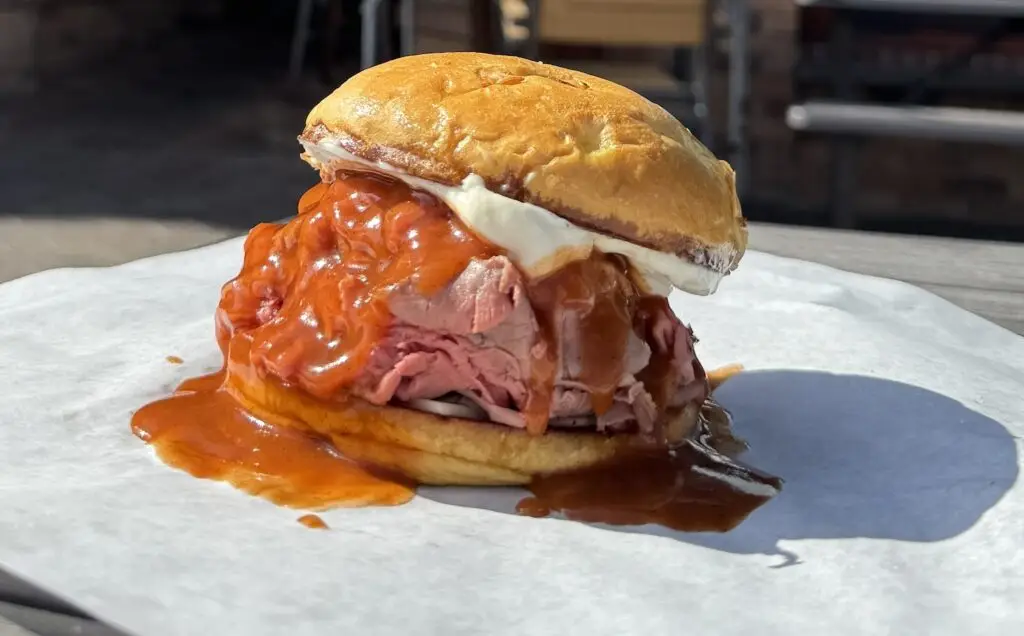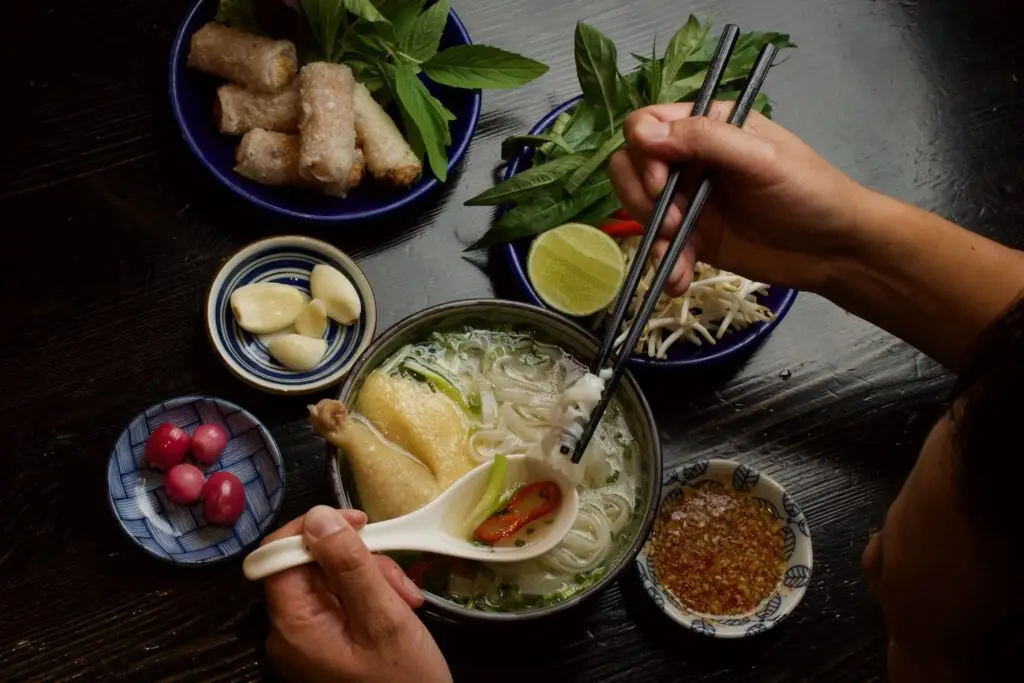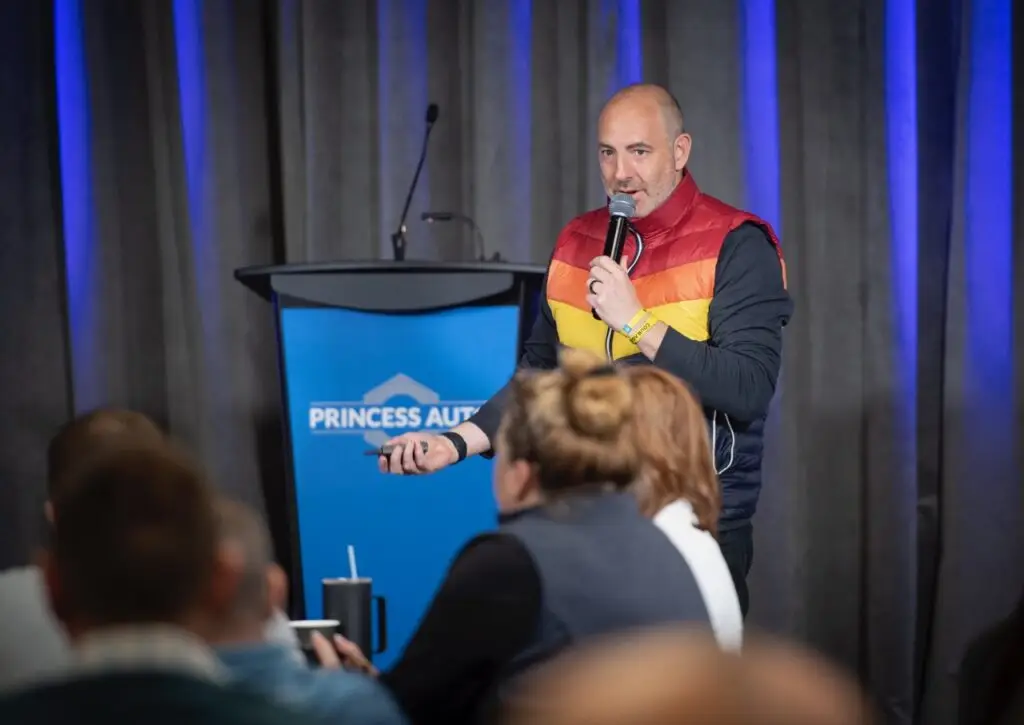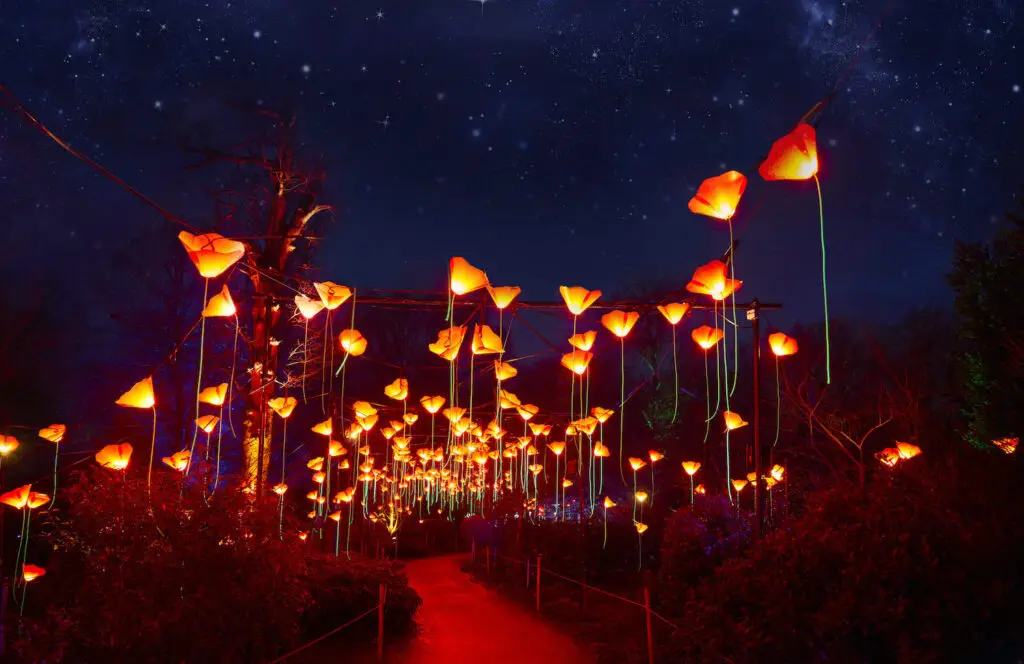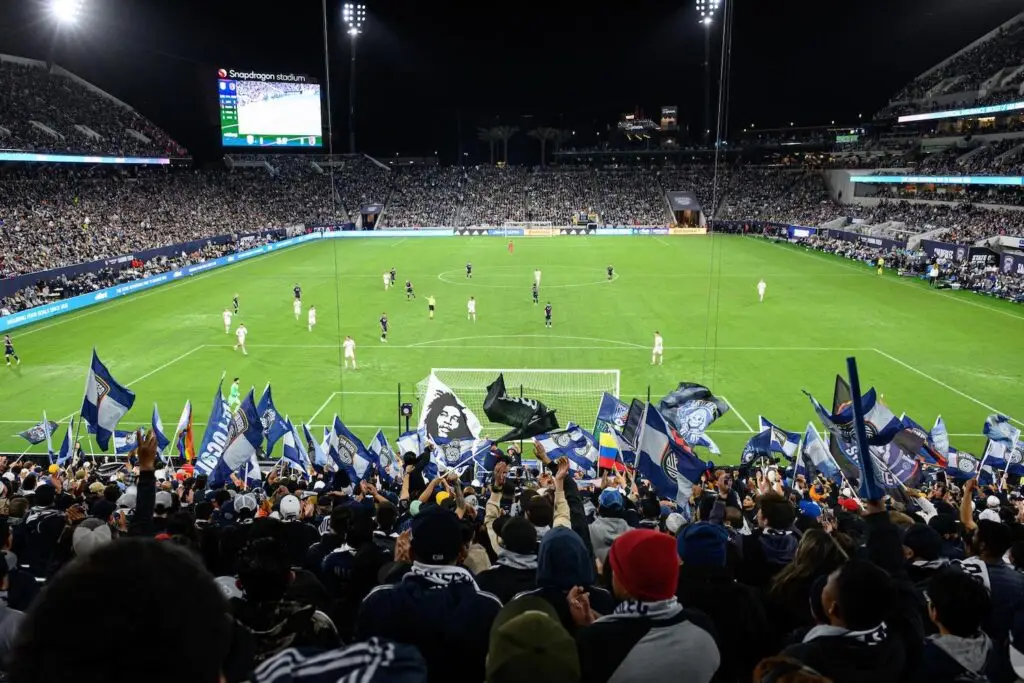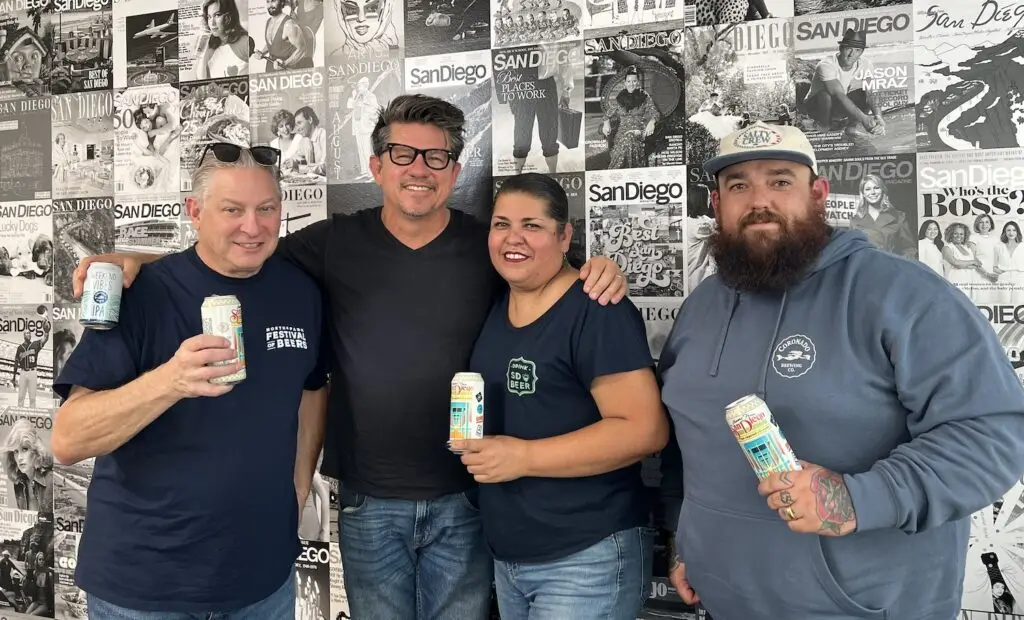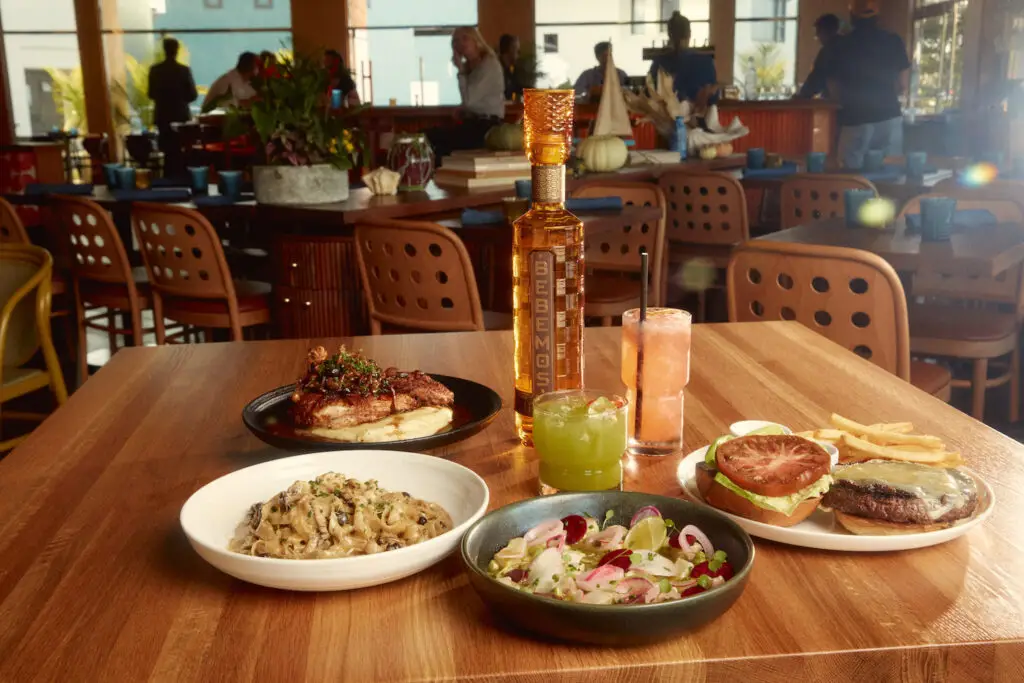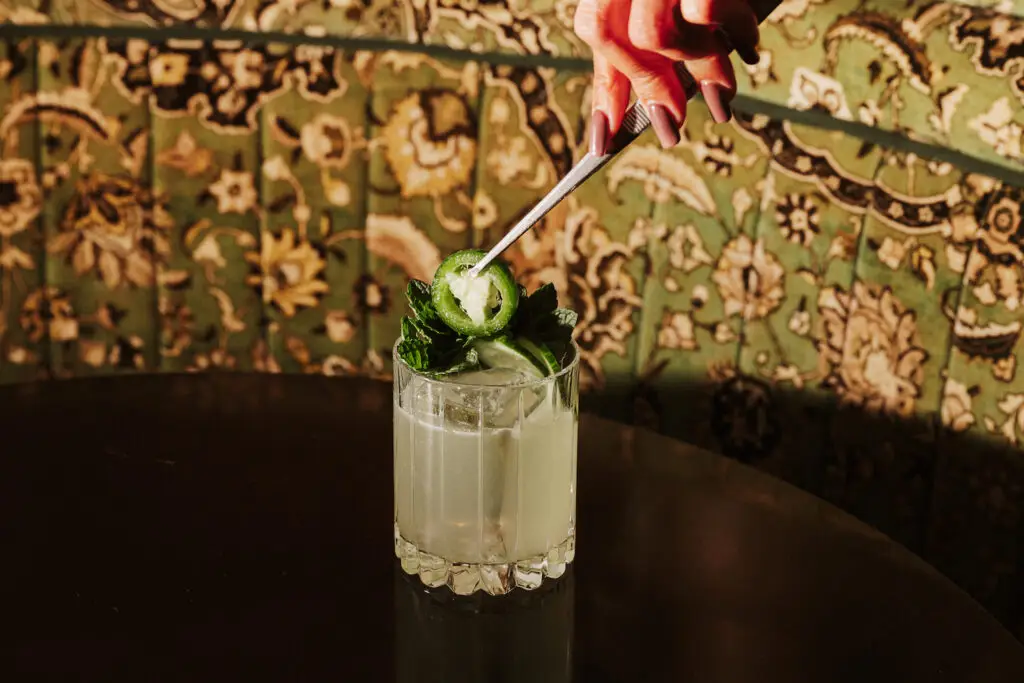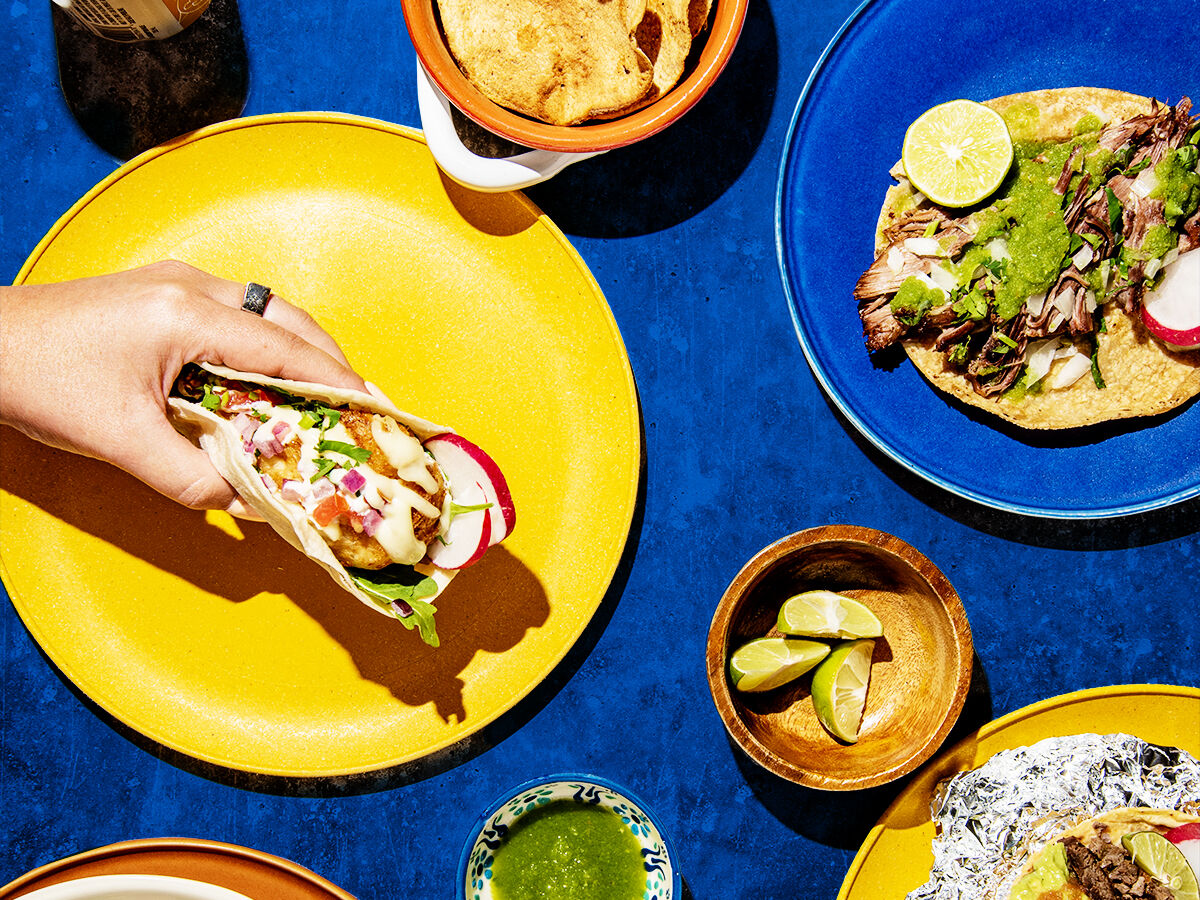
Love Letter to Tacos
Olivia Hayo; Styled by City Proper
Dear Tacos,
You are the weighted blanket of comfort food. Milkshakes are nice, but you bring the marinated meats to our yard and that is preferable. You often come in threes, which is better than coming in ones. You can be mild or you can be spicy, like bedrooms.
You are a gentle on-ramp to beginner Spanish. Through you, those of us who didn’t grow up with it learn the words for lamb (borrego), shepherd style (al pastor), and “this taco gives me emotions” (este taco me da emociones). You are a geography lesson. Through tacos we find Baja California (machaca and queso fresco and lobster tacos), Sinaloa (al pastor), Oaxaca (cheese), Puebla (mole), Michoacán (carnitas), Yucatán (achiote), Veracruz (hoja santa), and Las Vegas (Roberto’s and Tacos el Gordo). You are a cultural attaché and diplomatic salve.
Look, it’s been a hell of a year.
Please pardon my brief meditational prayers to a foodstuff and the people and culture behind it. I have a thesis: Tacos are the greatest food and I finally figured out why. I’m sure of it. Though I could be wrong. Who cares. This feels nice.
I’d love to say I grew up in a home that smelled of sizzling carne asada and simmering carnitas, cave-aging Cotija cheese in my sister’s Easy-Bake Oven. But as a family of mixed and unknown white-person descent, our kitchen was more a place where hamburgers were helped and the codependent relationship between bologna and Wonder Bread was abetted.
I was six or maybe seven at the time of my first taco. Regretfully I admit it wasn’t from any of San Diego’s iconic shops. It wasn’t the steaming hot, fresh tortillas of El Indio (started by Ralph Pesqueira Sr., 1940) nor the fried-in-front-of-you shells of Las Cuatro Milpas (the Estudillo family, 1933). It wasn’t the turkey tacos at Tony’s Jacal (the Gonzalez family, 1946), nor the carnitas at Fidel’s (the Montanez family, 1961).
It was Taco Bell. The Bell was the gateway taco for many non-Latino kids of the ’80s. These days, globally inspired food is the norm. Kids of all ethnic backgrounds are crawling through cardamom-rosewater cakes on their first birthday and high schoolers drink small-batch pulque when their parents are away at “conferences.” But us kids from America’s ball-pit generation were stranded in a culinary dark age, flanked by burgers and chicken breasts. Say what you want about The Bell’s quality standards (the ground beef is pulverized into such fine granules that it looks less like meat than softened and browned Nerds candies)—and I’ll sidestep the discussion about cultural appropriation. Truth is, that whitewashed taco launched my lifelong obsession with real Mexican food and drove me into every tiny mom-and-pop taco shop I could find.
I embarked on the pathway to taco enlightenment, moving on to Roberto’s like most San Diegans. Dolores and Roberto Robledo started with a tortilleria in San Ysidro in 1964, and then apparently decided to become gods. Their three rolled tacos were a teenager’s cheat code for happiness—deep fried, crunchy meat torpedoes under so much guacamole you felt like a millionaire. They were open 24 hours, so whenever you found yourself on the crime-y side of midnight in need of a fourth meal, Roberto’s was there for you. They fed night-shifters and partiers, which made them the official food of our wildest nights and most memorable cries. To kids who grew up here, the Robledo elders exist on the same cosmic echelon as rock stars, astrophysicists, and Tony Gwynn.
As teens we drove into Tijuana and farther into Baja to pay homage and eat at the source—the legendary taco carts. A taco cart is evidence of how much beauty and productivity a single human is capable of; a man or woman standing all day and night over a sizzling plancha, a spectral figure with tongs in a cloud of meat smoke, armed with a lifetime supply of chopped onions and cilantro, that delicious taco potpourri, cranking out one satisfied customer after another with rapid speed. Tijuana is to tacos as Napa Valley is to wine. It’s Taco Vegas, with attractions like Tacos el Franc, Tacos Kokopelli, Tacos Salseados, Cafe la Especial, Taco Nazo, and Mariscos Ruben.
Through tacos you discover you enjoy eating landscaping (nopales, aka cactus). With great reservation you try lengua (tongue) and either don’t mind it or decide it is a life purpose. In Guadalajara I’ve eaten escamoles (ant egg) tacos and agave larvae tacos. And though I don’t feel the need to repeat that experience without a good deal of coercion, a corn tortilla and salsa made it taste okay, even briefly good.
That is the transformative beauty of the taco. With a corn tortilla and some cilantro and onions and lime and a decent hot sauce, you can enjoy just about anything in life.
While speaking with some of the city’s most beloved taco shop owners and chefs in recent weeks, I pestered them for the big “why.” Of all the hokey “official days” for foods, why is Taco Tuesday the only one treated as a sacred ritual? Why does it feel like the true universal language is tacos and not burgers or math?
Priscilla Curiel, chef-owner of Tuétano Taquería in San Ysidro, nailed it when she said simply, “Because you can eat them every day.” And that’s it. Yes, they’re tasty. But so are pizzas, burgers, curries, ramens, and gyros. All comfort foods are unpretentious (you can be an elitist boob while eating a taco, but it’s harder). They’re inclusive to all walks of the socioeconomic strata because they are affordable. They’re all made fast for our busy lives.
But the frequency potential is why tacos win. You can’t eat pizza or burgers multiple times a week. (You could, but there would be significant physical trauma.) Too much bread. But a thin, gluten-free corn tortilla, a moderate tuft of meat, that little topping “salad,” and fresh salsa?
Yes you can.
This explains the existence of “taco culture.” If people eat at a certain place a few times a week, lives intermingle more. Regulars become friends which leads to bonhomie and loyalty and… a culture.

At Tuétano Taquería, chef Priscilla Curiel serves up bone marrow tacos
Olivia Hayo; Styled by City Proper
The Taqueras and Taqueros
Priscilla Curiel has been featured in national food magazines, and she’s had beef bones thrown at her. Recently she received recognition from the Michelin Guide, and she watched an irate customer fling salsa at her wall.
That’s how emotional people get about tacos, especially when you’re doing something outside the norm. Curiel’s Tuétano Taquería in San Ysidro—a bright, one-room yellow box on San Ysidro Boulevard, where she often cooks with one other woman, Patty, sometimes with her young children underfoot and her husband lending a hand—is known for her bone marrow taco (tuétano translates to “marrow”). The presentation is remarkable: a sizable chunk of charred and slow-roasted bone atop a taco with a little stick you use to scoop out the molten marrow. On each table is her housemade salsa macha, a Veracruzana specialty made
of toasted chiles, peanuts, garlic, and sesame oil. It doesn’t look like the salsa most Americans are used to.
“I knew that good food would bring good people,” says Curiel, who grew up working in her parents’ restaurants, La Espadaña in Tijuana and Talavera Azul in Chula Vista. “But the first year was horrible. Sometimes I would close early. I had people throw the bones at me. I’d say, ‘You ordered the bone marrow!’ and they’d say, ‘Yeah, but you didn’t bother scooping it out, you just put a little stick in there!’ I had one person throw the salsa macha against the wall.”
Curiel’s parents never wanted her to cook, so she went to culinary school. “I was the black sheep,” she admits. “Chefs tend to have that in common.”
She applied for jobs in San Diego kitchens and was rejected by most. She briefly found a home under Pablo Becker, owner of former high-end East Village Mexican restaurant El Vitral, and spent a few weeks at Bencotto. After El Vitral closed, she worked mornings at her parents’ restaurants, then afternoons catering events. On weekends she slow-cooked birria and delivered it to breweries.
“But it was always my dream to have my own restaurant,” she says. “I always saved. I worked and worked and didn’t socialize and didn’t care.”
When space in this 100-year-old building came available, she jumped. The remodel was extensive. “After four months I was out of funds,” she says. “But since I’d already spent my life savings I was like, ‘Oh hell no, I’m not going to lose this.’” She worked five days a week, picking up whatever jobs she could to pay rent on her as-yet-unopened taquería—catering events, styling food for social media, cooking for chef Hector Casanova at Casanova’s Fish Tacos in Spring Valley. She poured it all into the build-out of her dream.
She finally opened in late 2018 and had those bones thrown at her. She stayed up until 1 a.m. answering every Instagram comment about her taquería. She was obsessed. “My daughter hates tacos because she knows how many years I struggled to make tacos better and better and better,” she says. “It was beginning to hurt my family because I wouldn’t talk about anything else. They were like, ‘Shut up, Priscilla.’”
A year later, despite the pandemic, the all-night customer service and hard work has paid off. She says she has turned the corner; people have stopped throwing bones. She just opened Mujer Divina, a coffee shop and burrito house in National City.
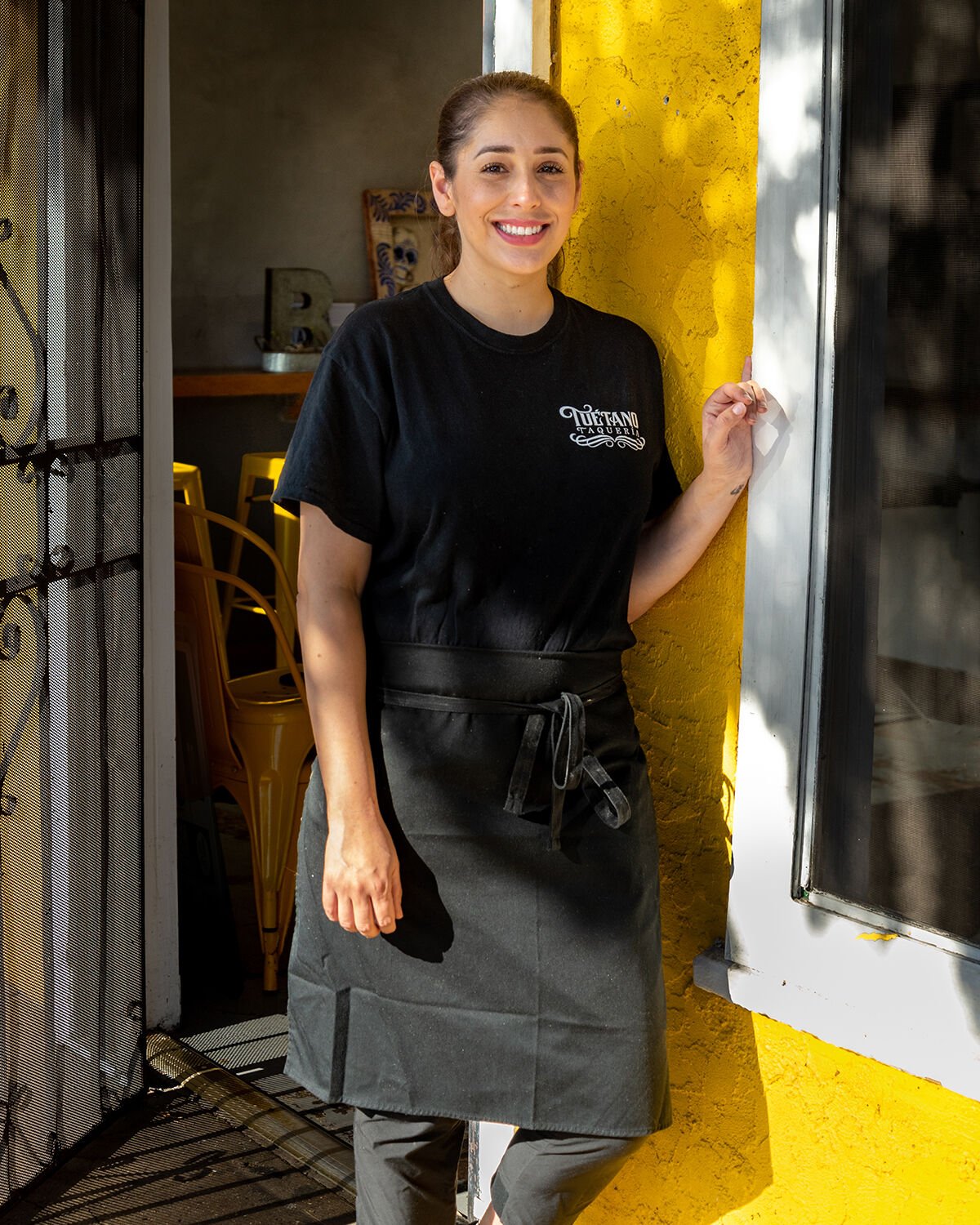
Tuétano Taquería’s Priscilla Curiel created a bone marrow taco that inspired imitations across Southern California and the US.
Olivia Hayo
Trading Scrubs for Salsa
Thirty minutes north of San Ysidro, on Pearl Street in La Jolla, the line is always there, snaking for half a block just west of Mitch’s Surf Shop. Has been since 2013. People wait for their turn at The Taco Stand.
“Some people think the lines are fake, but they’re not,” says owner Julian Hakim. “People wait over an hour, sometimes two hours. The expectations are so high after you wait two hours for a taco. I hate that, but what can you do? That’s why we have to be consistent.”
The Taco Stand was unexpected. In 2013, Hakim had just graduated from UNAM in Mexico City, one of the top medical schools in the world. Born in LA and raised between Tijuana and San Diego by Mexican and Persian parents, Hakim was getting ready to start his residency when his uncle called.
“He owned Pizza on Pearl and we would always discuss this idea for a taco shop,” explains Hakim. “As a kid I went to school in San Diego but crossed the border every single day. I always found it hard to eat tacos here because I went back to TJ every night and it was just so much better. I wanted to make tortillas by hand, do al pastor on the trompo [a vertical spit that slowly rotates and bastes the meat] instead of from a drawer, use better ingredients than they did in TJ.”
Be a doctor later, his uncle told him—the space next to Pizza on Pearl was available.
“It was a weird time for me—my mom and dad were not too thrilled,” Hakim says. “I wanted to get into orthopedics and surgery, and you have to wait one year anyway. So we opened in La Jolla and the lines formed and just never stopped. My uncle said, ‘I think you may have something here.’ So we opened downtown and in Encinitas to see, and they turned out to be big hits. Was I going to stop being a doctor to run a taco shop? I needed to make a decision, and that was it.”
Hakim’s not a chef. To start, he went to different taco carts and shops in Tijuana and Baja and paid them for recipes. His churro recipe is from a man with a cart in Rosarito whom they frequented as kids. They paid for quality ingredients. “I’m sure every restaurant will say they use quality ingredients,” he admits. “We pay up for certified Angus beef. It’s expensive and most people wouldn’t dare do it, because the small profit margin means you’ve got to have high volume. Luckily, we do. And when the quality is there, you don’t have to take extra steps.”
As of last year, the doctor-in-waiting had opened seven Taco Stands. TripAdvisor named them the fourth best fast-casual restaurant in the country, behind In-N-Out and ahead of Five Guys.
“Just like Americans have their favorite restaurants in town, Mexicans have their favorite taco place and we all go there and religiously and often,” he says. “It’s such a universally easy food and it seems you never get sick of it. It’s definitely lighter. I’m not saying it’s healthy. But a well-made taco with a corn tortilla has no gluten, very few calories, and no additives whatsoever. Just corn and water. Plus, there’s only one flavor of hot dog, but you can make a taco out of anything.”
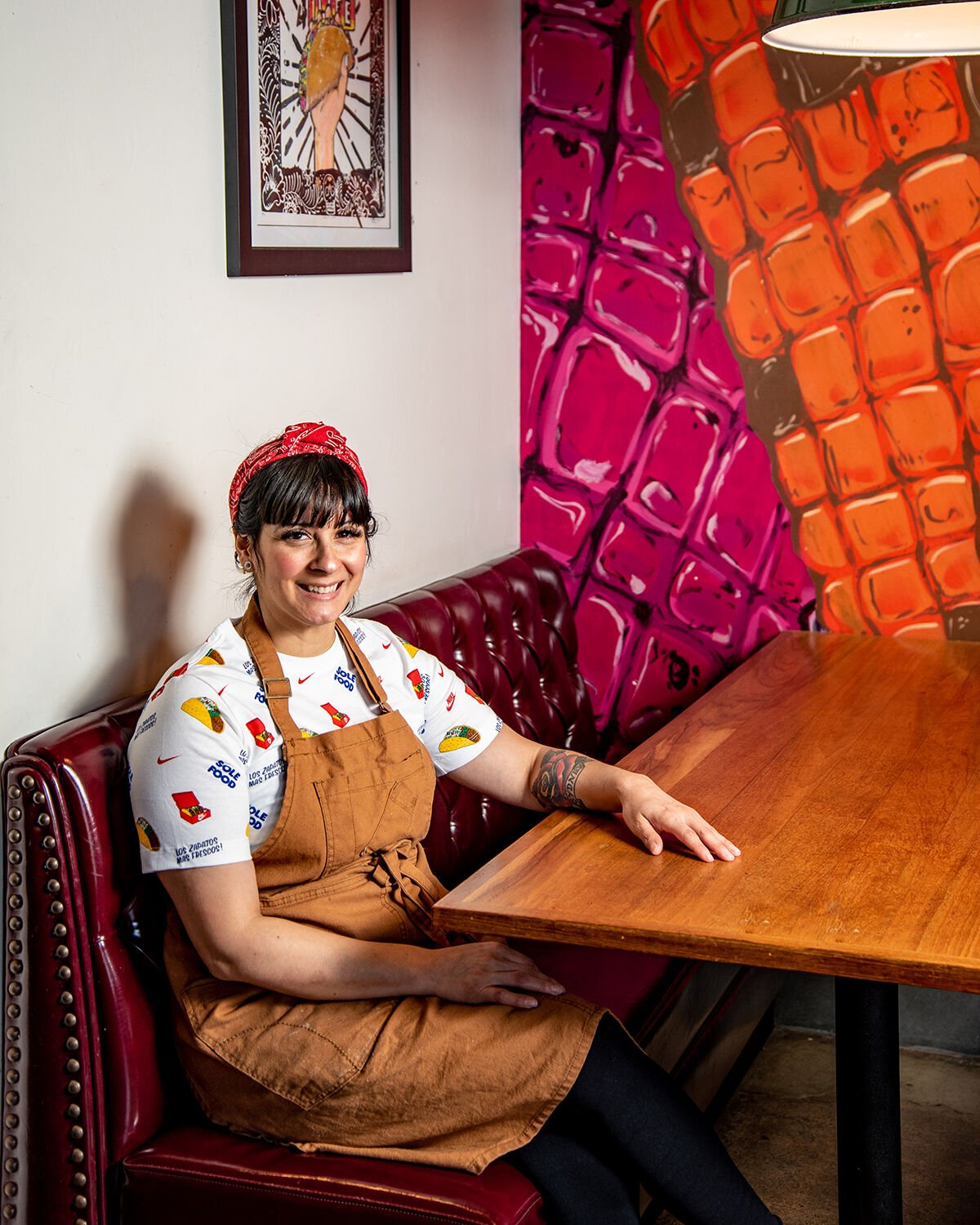
Galaxy Cantina & Grill’s Christine Rivera makes everything from scratch, including the masa for the tortillas.
Olivia Hayo
Shoot for the Stars
On the other side of La Jolla, near the Shores, Galaxy Cantina & Grill is a casual, open-air showroom of what happens when a nationally acclaimed chef—Trey Foshee of George’s at the Cove—throws his skill set and team into taco creation. This whole restaurant was started from a single dinner at Tbl3, a recurring 12-to-14-course tasting menu at California Modern, the fine dining room at George’s.
“I had no desire to become a sous chef or a chef,” says Christine Rivera, now chef de cuisine of Galaxy. “I was perfectly content being a cook at California Modern. It wasn’t until Trey said, ‘Hey, we’re doing this Tbl3 taco and I don’t feel right not making our own masa and tortillas from scratch—can you research how to do it?’ I was like, ‘Sure, I guess.’ In my Mexican American culture it’s just something you buy. You don’t go source your ingredients and grind everything.”
Skeptical but dedicated, Rivera and Foshee started researching different corn and playing with water-to-corn ratios. They found a non-GMO heirloom corn they liked best, and they nixtamalized it—a process of soaking and cooking raw corn to prepare it for grinding into flour.
“So we launched it at Tbl3 and Trey goes, ‘How about if we opened a taco place that revolved around this masa?’” Rivera says. “Tacos all start with the tortilla. If you’re using really good ingredients, you want to make sure you put those ingredients onto something that’s also high quality. I remember Trey said, ‘You’re not going to put shitty sushi rice under high-quality fish.’”
She drove up to Costa Mesa’s famed Mexican restaurant Taco Maria to share masa recipes and trade notes. She flew to New York, observing and trading masa recipes with famed Mexican American chef Daniela Soto-Innes. When you see restaurants making their own tortillas on-site, most of them have bought premade masa. Galaxy is one of the only (if not the only)restaurants in San Diego doing every step from scratch, and the difference in their blue-corn tortillas is stark.
“Like bread, there are so many variables to a good masa—altitude and humidity and this and that,” explains Rivera. She and Foshee opened Galaxy Taco in 2015, based around this masa obsession, with George’s-caliber cooks using produce from the most respected local farms and sustainable meats and seafood.
“So,” she continues, laughing, “we make everything from scratch from these great ingredients and occasionally people get upset when we charge two dollars for the salsa.”
Tacos 2.0
This new wave of taco zeal—which most chefs and owners agree started in San Diego about 2013–2014—stems in part from these better ingredients, and moreso the caliber and creativity of their chefs. San Diego–based taco success story Puesto recently hired former Eleven Madison Park sous chef Ian Tenzer to be R&D chef for all of their restaurants, including the newly opened 10,000-square-foot Puesto Mission Valley. When Frank Vizcarra opened Lola 55 in the East Village, he partnered with San Diego native Drew Bent, a former executive chef at Tender Greens who’d done stints as a cook at Chez Panisse and the Mexican pop-up of the world-renowned restaurant Noma.
“I grew up in Linda Vista and there was a taco shop called Super Bronco Taco,” explains Bent. “That place had a bean tostada that changed my five-year-old life and I couldn’t get enough. My whole life has been trying to chase that bean. In restaurants, most ‘family meals’ are Mexican inspired.”
Lola55 has received national press in Forbes and other outlets, for a few reasons. First, the sheer quality of the ingredients and creativity of Bent’s staff. Second, the logistic prowess of Vizcarra, a Tijuana native who, after a career playing for the San Diego Sockers, became one of the most respected operational minds in the food-and-beverage space, overseeing large portions of McDonald’s global expansion. Their combined talents are why customers are able to pay just $4.25 for a taco with pork shoulder confit, crisped maciza, shaved tomatillo, avocado mousse, pickled red onion, and cilantro.
“A lot of our regulars eat three, four, or five times a week,” Bent says. “One of the core missions has been ‘bold flavor but light on the belly.’ It feels like you’re eating rib-sticking food but you’re not. We realized over time we’d end up in a lot of trade areas that had lunch. Last thing we wanted was to feed you something and you’d go back to the office and feel lethargic. You’re not breaking the bank, and you’re ready to go back to work.”
In North Park, City Tacos owner Gerry Torres says he realized he had a deep instinct for restaurant work while he was in the hospital. “I had a car accident—27 fractures,” he explains. “My buddy came to see me while I was in a coma and said, ‘Hey, table 43 needs bread!’ and I guess it was the first time I moved. Even in a coma you hear something like that and you move. I can’t tell you whether or not it’s the truth, but that’s what he said and it sounds right.’”
Torres has spent 28 years in the food industry, starting at Port of Subs in Oceanside, then nightclubs in San Diego and Tijuana. He was a busser and waiter at old Gaslamp restaurants like Garlic’s and Trattoria la Strada. He opened Tiramisu in La Mesa with that buddy from the hospital—former La Strada owner David Chiodo—and ran it for ten years. Then he tried to leave.
“I went into logistics for about a year,” he says. “The family was happy because I had weekends off. And it was the worst job of my life. I couldn’t handle it. My wife knew I loved the restaurant business. She knew the sacrifices she’d have to make with my time. So I rolled the dice in North Park with City Tacos.”
He tapped chef Tony Guan (Underbelly) to oversee his idea of a pared-down menu of four original tacos and none of the classics.
“We weren’t going to have any carne asada or adobada, but instead chile relleno tacos, mahi adobo, the borrego, and chorizo asado,” explains Torres, who was born in Mexico City and grew up in Tijuana, Miami, Hawai‘i, and San Diego. “I thought it would work because the perception of Mexican food in San Diego was so far off what Mexican food really is. You went to taco shops here and they would have 40-item menus, but it was just the same ingredients presented in different ways. I felt it could be modernized and bring the quality up with nicer ingredients.”
He credits City Tacos’ success to timing and plain old luck, as well as having options for vegetarians and vegans, who were still largely ignored in the taco space when they opened in 2014. “I was trying to name it a taquería, but that term didn’t exist at the time,” he explains. “People said, ‘Just call it a Mexican restaurant,’ but it wasn’t a Mexican restaurant. Then the taco craze began. We boomed, and were booming right up until COVID. Now my dream is to bring back my employees and promote from within as we grow. I want to do this for the rest of my life.”

Ernie Becerra’s family has lived in the Barrio Logan area since around 1900. He opened ¡Salud! in the neighborhood in 2015.
Olivia Hayo
Barrio Logan has been a hub of Chicano culture since the first decades of the 20th century. The immigrant population rose dramatically thanks to refugees fleeing the Mexican Revolution (1910–1920), but Ernie Becerra’s family preceded even them: “My dad is fourth-generation San Diegan,” he explains. “Our family moved to the Barrio Logan area around 1900 when it was called Logan Heights. I grew up in the South Bay, but we’d come back to Logan constantly.”
Along with Las Cuatro Milpas, one of the marquee restaurants in Barrio Logan was Porkyland, located on the corner of Logan Avenue and Sampson Street—where Becerra’s ¡Salud! restaurant is now.
“I was constantly in this building as a kid,” he remembers, “coming here for Chicano Park and Las Cuatro Milpas.”
Out of high school, Becerra went into mortgages and banking, while cooking tacos as a hobby. He had young kids to support. “Then I got laid off and I told myself I didn’t want to work for anybody anymore,” he says. “I had a scrapbook full of recipes and notes. I didn’t have a dime, maybe $1,500. I told my wife I was going to buy a taco cart. She didn’t like it. My parents didn’t think I was going to make it. I put my head down and got to work.”
For a year and a half, he catered events by himself under the name San Diego Taco Company. Each day, he’d drop his kids off at High Tech High in Point Loma, then drive down Logan Avenue and dream. “It was dead, run-down, not the same,” he remembers.
One day he saw a sign on the door of Porkyland, and he called that number over and over until he got the owner. “It was a pretty gnarly building when I moved in about eight years ago,” he says. “The back was full of trash and syringes. The owner gave me cheap rent and I fixed it up little by little.”
Originally it was just meant to be a tasting room for his catering business. “But we opened the doors and it went gangbusters,” Becerra explains.
He renamed it ¡Salud! and turned it into a living museum of Southern California culture, with skateboard decks, graffiti art, and lowrider iconography. In 2017, the New York Times included a blurb about ¡Salud! and in 2018, Andrew Zimmern pulled down Sampson Street in a convertible blue rider surrounded by a film crew. Becerra couldn’t be there because he had family commitments, but he watched months later as ¡Salud! appeared on an episode of Zimmern’s Travel Channel show, The Zimmern List.
PARTNER CONTENT
“That’s when I knew,” he says, “look at this little taco shop from the Barrio getting international headlines.”
